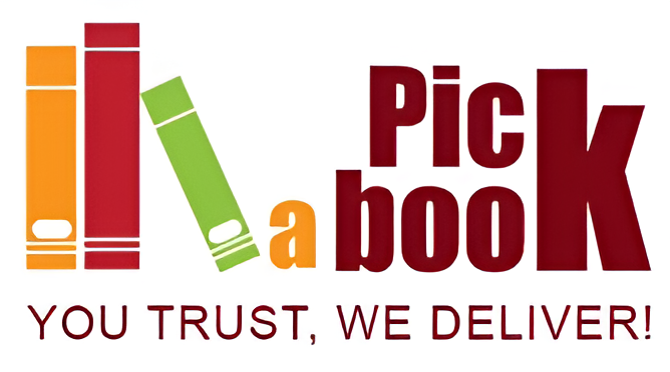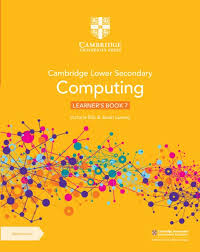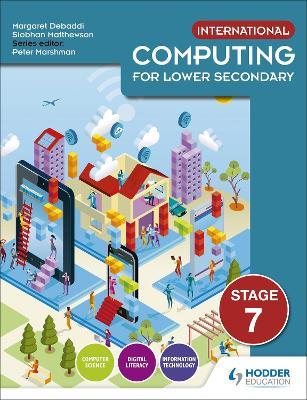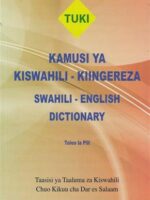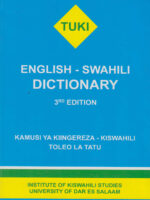-
Cambridge Lower Secondary Computing Learner’s Book 7
by Victoria Ellis, Sarah Lawrey
Support your learners as they continue their journey towards becoming confident computational thinkers with the Cambridge Lower Secondary Computing Learner’s Book 7 with Digital Access.
Filled with a variety of activities, such as planning a new computer game and exploring data types, this learner’s book builds essential computing skills, promotes online safety and shares interesting computing facts to help engage learners in their studies. This resource covers the computing strands of Computational Thinking and Programming, Managing Data, Networks and Digital Communication, and Computer Systems. Access source files and suggested learner’s book answers on Cambridge GO.
ISBN: 9781009297059
-
Faber Castel Bi-Colour Pencils 6s
Best of class colour pencils with smooth colour rich leads & special bonding that offers good sharpen ability & high break resistance
Phthalate-free lacquer on our pencils makes it safe for children
Dual-sided colour pencils in hexagonal shape
Gold & silver colour pencil included -
Holy Bible (RSV)
- A readable and literally accurate modern English translation
- Remains a favorite translation for many Christians
- Easily understood because it uses simple and enduring words.
- Recommended bible text for secondary schools in Kenya
-
Oxford International Student’s Atlas
The new edition of the Oxford International Student’s Atlas is the ideal atlas for secondary school students.
It includes stunning satellite images alongside mapping to aid understanding, country data, and easy-to-read colorful mapping, presented in an accessible visual layout based on research into how students use maps.
It covers key themes such as earthquakes and volcanoes, climate and climate change, economic activity, development, and globalization. It provides comprehensive coverage of each continent and the world.
It is the ideal atlas for students to use on exam courses, and is perfectly suited to Cambridge IGCSE (R) Geography and Cambridge International AS and A Level Geography courses.
The Oxford International Student’s Atlas is supported by the Oxford International Student’s Atlas Skills Workbook – a fill-in skills workbook ideal for the classroom and homework.
Product details
- Paperback | 136 pages
- 228 x 292 x 10mm | 554g
- 12 Jul 2012
- Oxford University Press
- Oxford, United Kingdom
- English
- Revised
- 4th Revised edition
- Full Colour
- 9780199137572
- 136,353
-
Art Matters 11-14 Student Book
This textbook covers a range of styles and cultural traditions which pupils can use for inspiration and comparison. It takes a project-based approach to ensure coverage of the skills, knowledge and understanding required at Key Stage 3. It shows examples of techniques and pupils’ actual work.Product details
- 12-17
- Paperback | 64 pages
- 195 x 262 x 4mm | 140g
- 27 Jun 2017
- Pearson Education Limited
- Heinemann
- Harlow, United Kingdom
- English
- illustrations, (some colour )
- 9780435812041
- 908,909
-
Nelson Key Geography Foundations Student Book
This newest edition of David Waugh and Tony Bushell’s Key Geography provides the support you need to deliver the 2014 KS3 Programme of Study. Suitable for all abilities, the student books and new Kerboodle online resources focus on developing key geographical skills and techniques to prepare students for Key Stage 4. Foundations includes chapters on Weather and Climate and Kenya and Africa. Answers to activities can be found in the Foundations Teacher’s
Handbook.Product details
- 12-17
- Paperback | 120 pages
- 221 x 275 x 7mm | 390g
- 01 Nov 2014
- Oxford University Press
- Nelson Thornes Ltd
- Oxford, United Kingdom
- English
- 5th Revised ed.
- 1408523167
- 9781408523162
- 145,365
-
Tuki Swahili-English Dictionary
Product details
- Publisher : Taasisi ya Uchunguzi wa Kiswahili, Chuo Kikuu cha Dar es Salaam; Toleo la 1 edition (January 1, 2001)
- Language : English
- Hardcover : 372 pages
- ISBN-10 : 9976911440
- ISBN-13 : 9789976911442
- Item Weight : 14.4 ounces
- Best Sellers Rank: #2,306,014 in Books (See Top 100 in Books)
- #5,163 in Foreign Dictionaries & Thesauruses
-
Tuki English-Swahili Dictionary
by The Institute of Kiswahili Research (Author), Institute of Kiswahili Research (Editor)
TUKI English – Swahili Dictionary is the most up to date dictionary of current English. It is published after more than a century since Madan published the first English – Swahili Dictionary in 1894, and half a century since Johnson (1939) was published. Johnson (1939) English – Swahili Dictionary, hitherto the most elaborate and authoritative dictionary, was compiled with the objective of helping the user to comprehend English texts. With the changing needs of a dictionary user, a new dictionary was necessary for two reasons : (1) to record new words and new meanings of words which the language acquired during the last 55 years, and (2) to provide some lexicographical information that current dictionary users need.
TUKI English-Swahili Dictionary was written with this background. It’s vocabulary covers a wide range of lexicon that includes both the general language and specialized language. It has more than 50,000 entries, some of which are technical words. It should however be emphasized that technical words which have been entered in this dictionary are only those which appear in the general language although they still belong to the specialized fields.
English as a world language is not always used the same way throughout the English world. It has some variations in form and meaning of words which are specific to one region or country. The language has also some words that suggest a particular style, attitude or level of formality. It has words which have been borrowed from other languages in recent years. This dictionary provides adequate information about some of these aspects so as to alert the user on when and where a word can or cannot be used and the connotation it may have to the audience.
This dictionary is both a decoding and an encoding dictionary. Efforts have been made to give every English word an equivalent word in Swahili and where no one word equivalent is found a phrase is provided. A headword which acquires meaning only when it is in a context, is put in a context first and then defined. For example:
con1 adv. pro and con pande zote
(hasi na chanya)As an encoding dictionary, it provides some hints on word formation and syntax. Derivatives and compounds of a headword have been explicitly shown in the entry so that the user can see how words which share a common root are formed and how the morphological changes take place during the derivation process. Words which cooccur with the headword have been illustrated in an example phrase or sentence, or by showing the obligatory and optional elements which the headword takes, e.g. prepositional phrase.
Pronunciation an important aspect in language learning especially the spoken language, has been omitted in this edition for technical reasons. We hope the readers will bear with us and tolerate the unavoidable omission.
The dictionary has drawn heavily on the following works for which special acknowledgement is made: A Standard English-Swahili Dictionary (1996), A Standard Swahili Swahili-English Dictionary (1995), Oxford Advanced Learner’s Dictionary of Current English (1980); among others.
ISBN: 978-9976911299
-
Cambridge Lower Secondary English Workbook 7 with Digital Access (1 Year)
Discover our new resources for the Cambridge International Primary and Lower Secondary Curriculum Frameworks With varied activities – including quizzes, completing sentences and identifying words – these workbooks help you practice what you have learnt. Focus, Practice and Challenge exercises provide clear progression through each topic, helping you see what you’ve achieved. Ideal for use in the classroom or for homework. Links to ‘Language focus’ boxes in the Learner’s Book provide more grammar practice.Product details
- Paperback | 134 pages
- 219 x 276 x 8mm | 360g
- 28 Apr 2021
- Cambridge University Press
- Cambridge, United Kingdom
- English
- Revised
- 2nd Revised edition
- Worked examples or Exercises
- 1108746624
- 9781108746625
- 419,983
Shop By Categories
- International Curriculum
- Marketplace – Used Books!
- National Curriculum
- TVET/Higher Learning
- Lab Equipment
- General Books
- International Curriculum
- Marketplace – Used Books!
- National Curriculum
- TVET/Higher Learning
- Lab Equipment
- General Books
